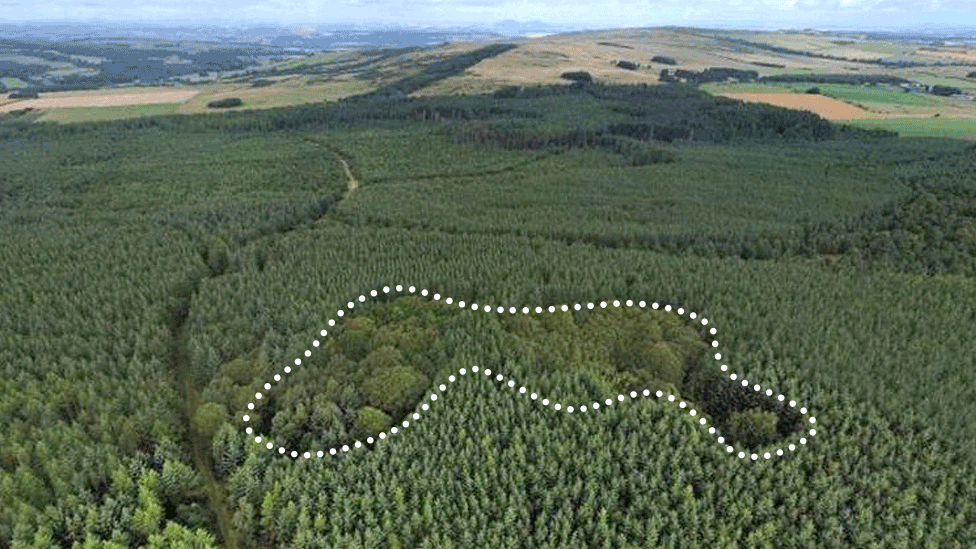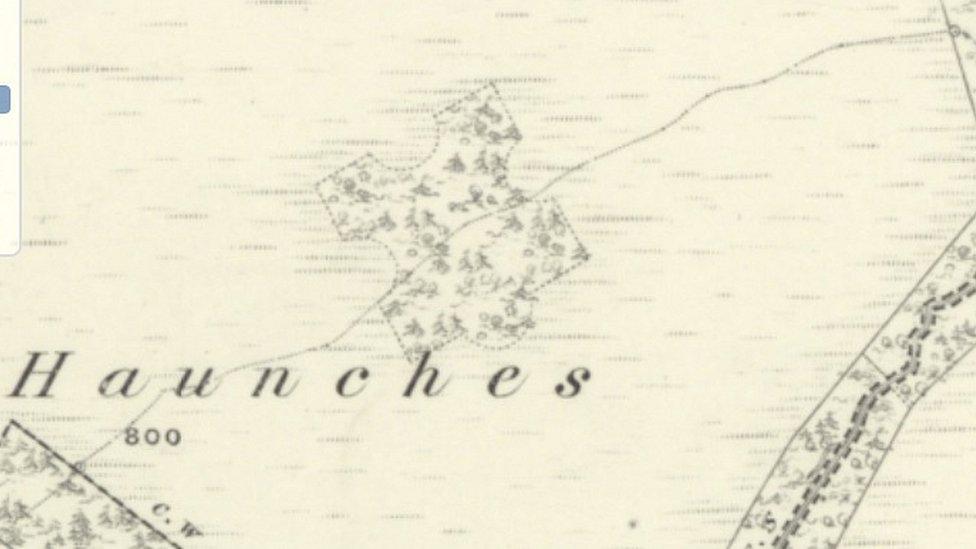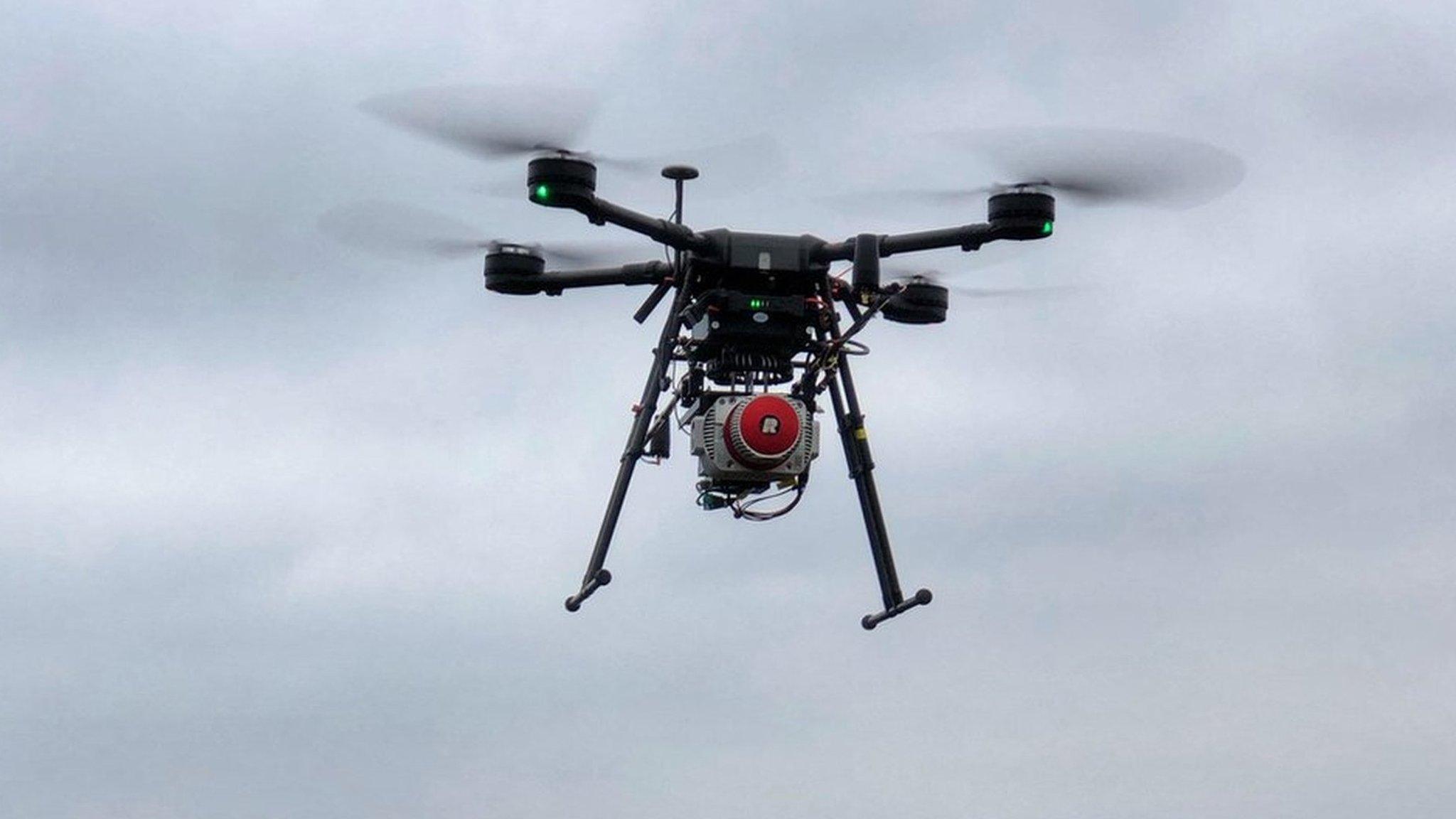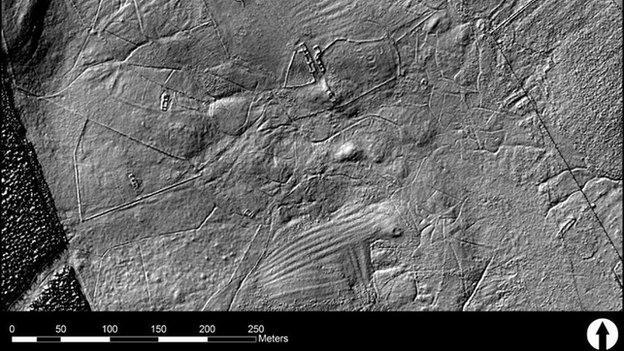Mystery over jigsaw puzzle piece-shaped earthworks near Jedburgh
- Published

The feature - highlighted on this image - is not visible from ground level
An appeal is being made to try to solve the mystery of three giant jigsaw puzzle piece-shaped earthworks uncovered in a Borders woodland.
Forestry and Land Scotland (FLS) made the discovery at the Swinnie plantation near Jedburgh.
A survey found an earthwork structure about five acres (two hectares) in size with two more nearby.
The embankment outlines are invisible from the ground but were revealed by using aerial laser technology.
FLS planning forester, Tom Harvey, described the discovery as "really odd".

Laser technology revealed the unusual shaped earthworks from the air
"The Swinnie piece is made up of broadleaf woodland species hidden within a crop of spruce trees," he said.
"The jigsaw piece shape is formed by a 'woodbank' - a raised embankment that in the very early days of forest management would define the woodland boundary.
"There would have likely been a ditch right next to the woodbank that was intended to protect the trees within from browsing damage."
He said on top and all around the woodbank were mature beech trees which were possibly up to 180 years old meaning the feature had been in place for some time.
The puzzle piece shape is invisible from ground level, with the feature just hinted at in regular aerial imagery but only became apparent with Lidar (light detection and ranging) analysis.
However, when the team decided to consult maps and images held by the National Library of Scotland things became clearer.

An old map shows the jigsaw shaped pieces of land dating from 1863
The Lidar images - 3D scans obtained by using lasers to "see through" the tree canopy to identify physical features on the ground - showed the woodbank outline.
The Swinnie Forest feature, as well as two others in the area, were marked on old Ordnance Survey maps dating from 1863.
Mr Harvey said they hoped to get to the bottom of what was behind the surprising features.
"We haven't been able to track down any information about who planted these woodlands or why these woodbanks are in such an unusual shape," He said.
"So we'd love to hear from anyone who can shed some light on this intriguing puzzle."
Anyone with any information can contact the team via email, external.
- Published25 May 2019

- Published2 October 2013
